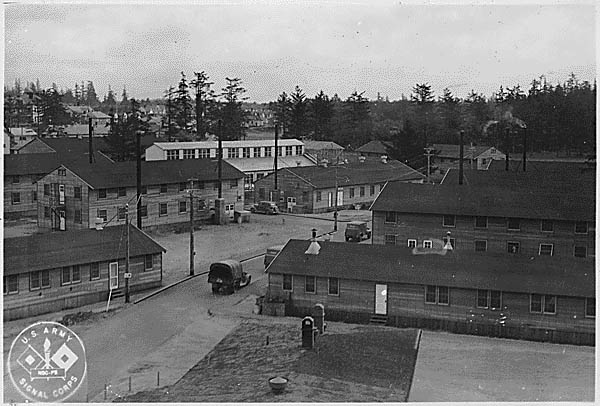Born in rural Louisiana in 1845, Moses Williams joined the U.S. Army in 1866 and embarked on a thirty-one-year military career in the American West, leading troopers of the 9th U.S. Cavalry’s Buffalo Soldiers and receiving the army’s highest award, the Medal of Honor. From his posting as ordnance sergeant at Fort Stevens on the Oregon Coast, Williams petitioned the War Department for the honor fifteen years after demonstrating what the assistant secretary of war later called "most distinguished gallantry in action with hostile Apache Indians in the foothills of the Cuchillo Negro Mountains” in August 1881.
Little is known of Williams’s birth or early life near Carrolton, Louisiana. “Father and Mother died while I was an infant,” he noted on a reenlistment form. “One brother died of consumption, one sister of fever.” Standing at five feet, four inches tall and 180 pounds and sometimes described as "mulatto "on federal forms, Williams’s face showed scars from what he described as “small pox when I was twenty years old.” His reputation as a skilled marksman is remarkable, considering what doctors diagnosed as “almost zero” vision in his left eye. Several of Williams's reenlistment documents list him as married with no children, but little more is known of his personal life.
In Lake Providence, Louisiana, on October 1, 1866, twenty-one-year-old Williams enlisted in the U.S. Army for five years. He was assigned to Troop F, 9th U.S. Cavalry, one of the six all-African American cavalry and infantry regiments authorized by Congress that year. Williams served in remote posts in Texas, New Mexico, and Nebraska, with forays into Colorado and Oklahoma. He learned to read and write while also rebuilding posts, escorting supply trains, locating and returning stolen cattle, and fighting the Kiowa, Comanche, and Mescalero Apache.
At Nebraska’s Fort Niobrara in 1885, Williams’s commanding officers recommended him to the secretary of war for a coveted position as the post’s ordnance sergeant, responsible for “the care, of the ordnance, arms, ammunition, and other military stores.” The appointment reflected Williams’s distinguished record of service as a noncommissioned officer, his skill as a clerk, and “his general character as to fidelity and sobriety.” It also removed him, after twenty years, from the demands of active field duty in lieu of a safer and more sedentary life of administrative responsibilities.
Williams’s longest post assignment, as ordnance sergeant in 1886 at Fort Buford, North Dakota, lasted until the post closed. He arrived for duty at Fort Stevens on October 15, 1895, serving out the last three years of his career as that post’s ordnance sergeant. It must have been a lonely duty, since he was the only soldier assigned to the post. After control of the post had transferred to the army’s Engineer Department in December 1884, Fort Stevens was not garrisoned by troops, and would not be until March 1898.
At Fort Stevens, Williams learned that the army had awarded the Medal of Honor to two fellow soldiers for action in the Cuchillo Negro Mountains in 1881—action in which Williams had participated. His former commanding officer provided a detailed letter of recommendation, and Williams applied to the War Department for consideration. On November 23, 1896, the department awarded Williams a Medal of Honor for most distinguished gallantry in action. “This soldier rallied the detachment when his commanding officer was dismounted and unable to reach it,” the citation read. “His coolness, bravery, and unflinching devotion to duty in standing by his commanding officer in an exposed position under a heavy fire...was undoubtedly the means of saving the lives of at least three of his comrades.”
Williams retired from the army on May 12, 1898. He moved to Vancouver, Washington, and listed his address as Vancouver Barracks. He died on August 23, 1899, and was buried at the post cemetery. Buffalo Soldiers from the 24th U.S. Infantry, assigned to the post at the time, probably provided the burial detail.
In 1991, General Colin Powell dedicated a monument to Williams and three other Medal of Honor recipients on Officers Row on the Vancouver National Historic Reserve. In 1989, the Moses Williams Pacific Northwest Chapter of the Buffalo Soldiers was chartered in Portland, as an affiliate of the National 9th and 10th (Horse) Cavalry Association.
-
![]()
Moses Williams.
Courtesy U.S. National Archives -
![Soldiers from one of the all-black army regiments, which became known as the Buffalo Soldiers.]()
Related Entries
-
![Buffalo Soldiers at Vancouver Barracks]()
Buffalo Soldiers at Vancouver Barracks
For thirteen months beginning in 1899, a company of 103 soldiers from t…
-
![Fort Stevens]()
Fort Stevens
One of the three major forts designed to protect the mouth of the Colum…
Map This on the Oregon History WayFinder
The Oregon History Wayfinder is an interactive map that identifies significant places, people, and events in Oregon history.
Further Reading
Schubert, Frank N. Black Valor: Buffalo Soldiers and the Medal of Honor, 1870-1898. Wilmington, Del.: Scholarly Resources, 1997.
Shine, Gregory P. "Respite from War: Buffalo Soldiers at Vancouver Barracks, 1899-1900." Oregon Historical Quarterly 107.2 (Summer 2006).







